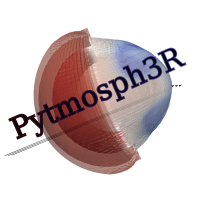The science of WHIPLASH
Thousands of exoplanets have now been found. In the next decade, the grand challenge is to characterize their atmospheres. This is the only way to unravel the origin of the wild, unexpected diversity we have uncovered. For this task, there are several planned observations missions but, to be ready for the analysis and interpretation of such high-precision observations, we need new-generation tools fit to address the multiple challenges they will raise. Indeed, until now, most atmospheric characterization observations—e.g. transit/eclipse spectroscopy—are analyzed with spherically symmetric, steady state 1D models that cannot accurately represent the very anisotropic atmospheres of most transiting exoplanets. This issue is worsened by the ubiquity of clouds, whose inhomogeneous spatial distribution— patchiness—prevents any satisfactory treatment in 1D.
In this project, we are developing a new framework to constrain the physics and composition of exo-atmospheres that will allow us to overcome these difficulties when analyzing and interpreting observations. This will is done by exploiting a new 3D planetary atmosphere simulator to answer the following fundamental questions:
– What are the necessary conditions to sustain liquid water on terrestrial exoplanets? How can we infer observationally whether an atmosphere meeting these requirements is actually present?
– Can clouds explain the puzzling features of observed hot, gaseous exoplanets? What can these observations tell us on the dynamical and microphysical properties of clouds inside these atmospheres?
The WHIPLASH team
Current members:
- Jeremy Leconte (Principal investigator)
- William Pluriel (PhD student)
- Tiziano Zingales (Postdoc)
- Aurelien Falco (Software engineer)
Associate members:
- Franck Selsis (Permanent researcher)
- Adam Yassin Jaziri (PhD student)
Past members:
- Takanori Kodama (Postdoc until 2020)
- Nikolaos Pattakos (Software engineer until 2020)
- Anthony Caldas (PhD student; graduated 2018)
- Pierre Auclair-Desrotour (Postdoc until 2018)
Results

